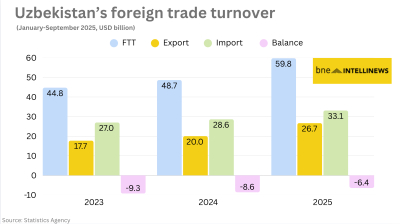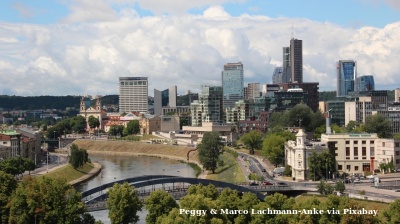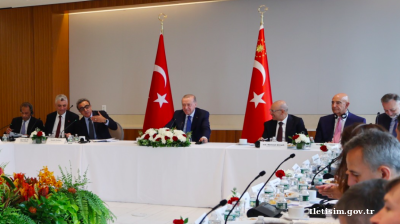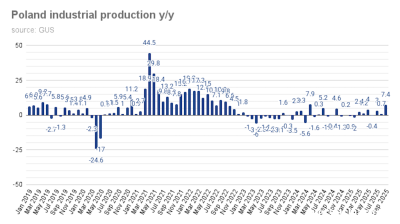Annual inflation in Serbia reached 8.2% in January, while month on month prices rose by 0.8%, according to Statistical Office of the Republic of Serbia data.
The figure is in line with the National Bank of Serbia’s (NBS’) expectations stated in the February Inflation Report. The monthly inflation growth is attributable mostly to food prices, notably the prices of vegetables and processed food.
The government’s capping of the prices of basic foodstuffs helped slow the pace of processed food price growth, in the face of persistently high cost-push pressures, to around 1% a month in December 2021 and January 2022, which is lower than in October and November when these prices increased on average by around 2% a month, said the NBS in a comment on the figures.
As in the previous months, close to three-quarters of the 8.2% y/y inflation in January was due to food and energy prices, two categories that monetary policy cannot affect much. In y/y terms, unprocessed food prices rose by 23.5% in January, while processed food prices gained 8.8%.
Most of the y/y rise in food prices reflects supply-side factors, such as surging global food prices, the drought in Serbia last year and higher production costs.
Energy prices climbed by 0.6% in January. Their movement is largely dictated by global factors, notably global oil price growth, which spilled over onto local petroleum product prices (up by 21.9% y/y in January), the NBS said. Inflationary pressures on this account are expected to subside in February, according to the central bank, which expects the government decree capping petroleum product prices to feed through into February inflation.
The central bank pointed out that in contrast to some Central and Southeast European countries, annual core inflation (CPI excluding the prices of food, energy, alcohol and cigarettes) was only half as high as headline inflation in January, equalling 4.1%. “Relatively low and stable core inflation is underpinned by the years-long relative stability of the exchange rate, which, as an anchor of price stability, will be maintained going forward,” the NBS stated.
The inflation expectations of the financial sector also contribute to the low and stable core inflation.
The decision of the Serbian government to enable companies to buy electricity under conditions much more favourable than market ones through June 2022 is forecast to help alleviate inflationary pressures.
The NBS forecasts that annual inflation will hover around the current level until the end of Q1. It is expected to strike a steady downward path starting from Q2 and settle between 3.5% and 4% by the end of the year.
The risks to the projected inflation profile are associated mainly with primary agricultural commodity prices, global prices of oil and other energy, the pace of global economic recovery and the persistence of disruptions to global supply chains.
Domestic risks mainly concern this year’s agricultural season, which the NBS’ projection assumes to be average. This implies a mild growth in agricultural production relative to 2021 when it contracted by around 5% due to the drought. If the agricultural season turns out to be better than average, y/y inflation could fall even below the target midpoint until the end of the year, whereas a worse than average season could push inflation to around the upper bound of the target tolerance band, the NBS said.
Data

Uzbekistan’s nine-month foreign trade nears $60bn
Export growth of 33% and import expansion of 16% y/y produce $6.4bn deficit.

Hungary’s central bank leaves rates unchanged
National Bank of Hungary expects inflation to fall back into the tolerance band by early 2026, with the 3% target sustainably achievable in early 2027 under the current strict policy settings.

Germany slowdown weighs on Lithuania’s export-driven manufacturing sector
Lithuania’s economy remains highly sensitive to the industrial cycle in Germany, its third largest trade partner.

Chobani yoghurt king Hamdi Ulukaya becomes richest Turk
Knocks Murat Ulker into second place in Forbes ranking as his company's valuation leaps to $20bn.


